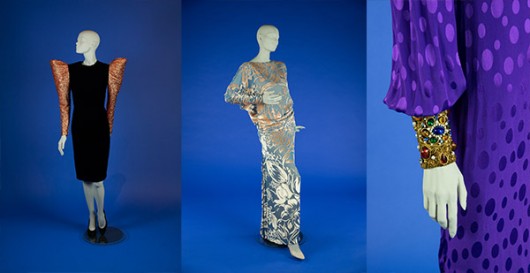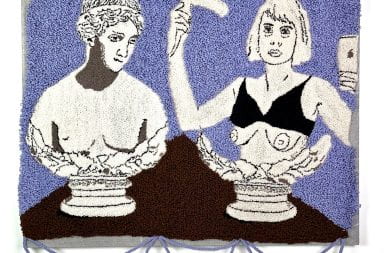An Ohio State costume exhibit illustrates the late 20th-century introduction of American influence to the global fashion stage.
The Historic Costumes and Textiles Collection’s American Aesthetics exhibit features the work of American designers Geoffrey Beene, Bill Blass and Oscar de la Renta during the 1960s, ‘70s and ‘80s.
The late 20th century was a period when the fashion world experienced a transition from primarily European influence to a more American fashion aesthetic, said Marlise Schoeny, assistant curator for the Historic Costumes and Textiles Collection.
“Even today a lot of people still think that Paris is the center of fashion change. It really is happening globally,” Schoeny said. “I think expanding out into the American market and really building off of American designers was one of the first times that it expanded outside of the French and British purview.”
The transition to an American fashion aesthetic introduced the idea of casual styles of clothing rather than the formal couture ensembles that previously dominated the industry, Schoeny said.
“I think (Beene, Blass and de la Renta) represent this more American ideal of sportswear — clothing that is wearable, clothing that can be worn every day,” Schoeny said. “Certainly it is well-made and high end, but at the same time it’s not so avant-garde that you couldn’t wear it to the office or wear it to a lunch or whatever it is you were doing.”
Beene, Blass and de la Renta’s innovative designs gained recognition throughout the ‘60s, ‘70s and ‘80s that contributed to the trio’s influence on global trends, culminating in each of the three designers being awarded multiple Coty American Fashion Critics Awards intended to promote and celebrate American fashion, Schoeny said.
Gayle Strege, curator of the Historic Costumes and Textiles Collection, said the exhibit shows the evolution of styles across the latter part of the 20th century while also showcasing each designer’s individual contribution and influence on fashion at that time period.
“One of the things that is really interesting about this show, and the fact that it’s spanning these three decades, is looking at the real change in styles,” Strege said. “A lot of the things from the 1960s were sort of very stiff and A-line and minimalist in their design, and then when you get into the ‘70s it’s a little more soft and flowing, and then into the ‘80s there’s just a lot of embellishment and luxury and glamour.”
The exhibit, which features evening wear, day wear, structured jackets and an assortment of little black dresses that range from four to five decades in age, offers visitors an opportunity to recognize the timeless elements of fashion relative to the contemporary styles of today, Strege said.
“I think it’s an interesting thing to come and see just in general the change of aesthetics that was happening in the world at that time period,” Schoeny said. “Anyone who is wearing clothing or buying clothing is vaguely aware of at least trends or what they consciously decide to put on their body, and it’s interesting to go back and look at what was fashionable then and what were sort of the trends that were going on and how people were presenting themselves.”
American Aesthetics will be on display in the Columbia Gas Lounge and Gladys Keller Snowden Gallery in Campbell Hall until April 30. Admission is free.



